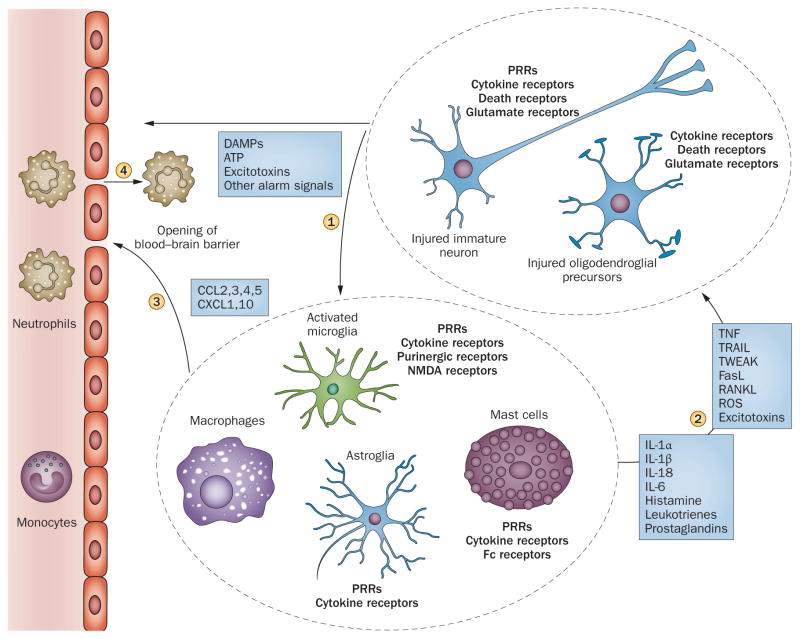Figure 3.
Early innate response to hypoxia–ischaemia. Immune effector cells (microglia, macrophages, astroglia, mast cells) sense alarm signals from injured parenchymal cells via PRRs and cytokine receptors (1). The triggered innate immune response has proinflammatory and toxic influences on the neurons, oligodendroglial precursors (2) and vascular bed (3); increased blood–brain barrier permeability contributes to the recruitment of immune cells from the periphery (4). Abbreviations: DAMP, damage-associated molecular pattern; NMDA, N-methyl-D-aspartate; PRR, pattern recognition receptor; RANKL, receptor activator of nuclear factor-κB ligand; ROS, reactive oxygen species; TNF, tumour necrosis factor; TRAIL, TNF-related apoptosis-inducing ligand; TWEAK, TNF-like weak inducer of apoptosis. Chemokines are abbreviated according to the new classification.

